October 12, 2022
Electrification of hydraulic systems is not a question of IF, it is a question of WHEN. As more mobile machinery manufacturers turn to electric systems to power their machinery, it is imperative that hydraulic technologies follow suit. Currently, less efficient hydraulics can’t match the efficiency ratings of electric motors and batteries, but redesigned electrohydraulic actuator designs can meet the challenges. Learn from the innovators in this area, as they come together to discuss how the fluid industry is responding to these challenges.
In this session, Neil Mendes will offer insight into what fluid power users and manufacturers can expect from the global energy market as we deal the impacts of the pandemic and tumultuous worldwide events. He will highlight the following:
• Global Demand (Future) – All Sources including Energy Transition
• Global Production vs Consumption
• Global Storage and Spare Capacity
• Prices for Oil & Natural Gas
• Opportunities in this Market
Ask any fluid power professional what the maximum pressure rating for an NFPA tie-rod cylinder and they will tell you it is 3000 PSI. However, we don’t have to accept this limitation, and with intelligent engineering, we can achieve 10,000 PSI or higher.
This paper debates a required revision to existent methodology of Burst Pressure Test of hoses, tubes, fittings and other hydraulics vessels. Current systems based on air-driven pump, largely used by hydraulic hose manufactures and distributors, may no longer meet industry’s spec neither would stand more demanding testing. The NEXT GEN Burst Tester is an upgrade to current methodology by submitting samples to be tested with “CONTROLLED PRESSURE vs TIME” as exactly as established by hose specs and at same time providing accurate burst pressure results. This paper provides managers and users required tool to start a conversation inside their organizations on how appropriately run burst test. It is a valuable opportunity to enhance operators and environment safety while providing outstanding accurate and reliable testing results without any oversight when determining correct burst pressure of a hose and other hydraulic component.
Review and understand what pressure intensifiers do and how to use them in hydraulic systems. Take a look at different applications and how they were used to reduce cost. The characteristics , advantages, and how they can benefit you in the design of high-pressure needs.
Development of new machines or resolution of existing problems can be expensive and time consuming for industrials. Having the possibility to work on these subjects with a numerical model of the vehicle is a huge advantage which must be exploited. To have a complete model of the vehicle, a combination of software and way of communications between them are used in order to combine a complex Multiphysics model, including hydraulic (hydrostatic transmission, pipes, valves, …), mechanic (1D, 3D, tires, tires-soil contact, terrain …) and other necessary physics depending on the model (electric, …), a realistic environment with 3D views of the vehicle, statics and dynamics actors, captors (camera, Lidar, Radar, etc.), the possibility to control the vehicle with steering wheel and pedals and the use of a programming interface to couple the model with a calculator (the same as the one who is in the vehicle) integrating the complete command control of the machine.
The following paper presents the method used to combine these three steps and how to use a complete model easily in order, for example, to study the vehicle behavior, test the relevance of the strategies of command control, or to implement autonomous tasks.
We use ten percent of our brain. Saturated fat causes heart attacks. Flow makes it go. These statements have one thing in common – they’re straight out lies. We can’t expect to lure the next generation of fluid power professionals by sounding off jingles they inherently know are wrong. Today is the day we bunk Flow Makes It Go.
Fluid Power Network
Resources
Subscribe to Fluid Power World
Advertise with usFor registration or logistic questions, contact events@wtwhmedia.com
Sponsorship Opportunities
Ryan Ashdown
rashdown@wtwhmedia.com
216-316-6691

